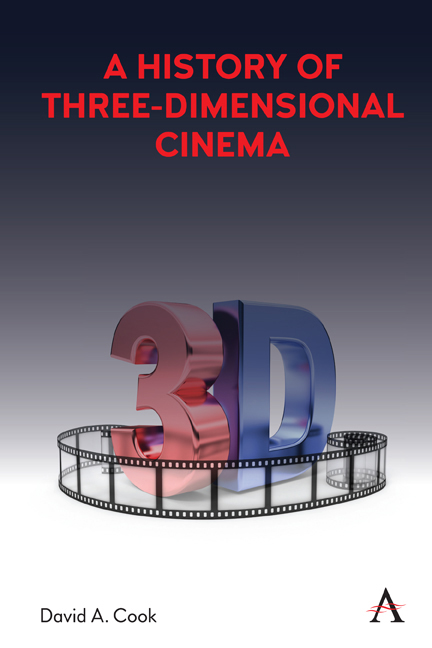Book contents
- Frontmatter
- Dedication
- Content
- List of Figures
- Acknowledgements
- Prefatory Note/Introduction
- 1 “A New Way to Simulate Presence”: The Foundations of Stereoscopic Entertainment, 1427–1888
- 2 “A Very Vivid Impression of Movement”: Early 3D Cinema, 1895–1952
- 3 “See It in 3 Dimension!”: The First Hollywood 3D Boom, 1952–55
- 4 Stereoscopic Revival, 1970–85
- 5 The Age of IMAX, or the “Immersive Cinema,” 1986–2009
- 6 The Blockbuster Years: Digital 3D, 2010–20
- 7 “A Different Kind of Mental Image”: Some Aesthetic Considerations about 3D
- 8 “Experience on Demand”: Virtual Reality
- 9 Conclusion
- 3D Discography: Discs Viewed or Sampled in Preparation for This Book
- Selected Bibliography
- Index
- Frontmatter
- Dedication
- Content
- List of Figures
- Acknowledgements
- Prefatory Note/Introduction
- 1 “A New Way to Simulate Presence”: The Foundations of Stereoscopic Entertainment, 1427–1888
- 2 “A Very Vivid Impression of Movement”: Early 3D Cinema, 1895–1952
- 3 “See It in 3 Dimension!”: The First Hollywood 3D Boom, 1952–55
- 4 Stereoscopic Revival, 1970–85
- 5 The Age of IMAX, or the “Immersive Cinema,” 1986–2009
- 6 The Blockbuster Years: Digital 3D, 2010–20
- 7 “A Different Kind of Mental Image”: Some Aesthetic Considerations about 3D
- 8 “Experience on Demand”: Virtual Reality
- 9 Conclusion
- 3D Discography: Discs Viewed or Sampled in Preparation for This Book
- Selected Bibliography
- Index
Summary
A great deal of human energy has been spent in trying to make flat surfaces look three dimensional. This is in part an effort to extend human vision with the promise that the depth perspective (and perhaps life itself) never ends.
From the foregoing, it should be clear that in one sense the history of three-dimensional cinema parallels, and sometimes burlesques, that of twodimensional cinema—that is, it represents a kind of alternative current to the mainstream film industry (and, later, the gaming industry). When that industry began to experiment with sound and color during the 1920s, it also experimented with two-strip anaglyphic 3D; when it sought an audiovisual alternative to television in the 1950s, it briefly adopted two-strip polarized 3D; when it sought to exploit post-Code “porno-chic” and sensational violence in the wake of CARA in the 1970s and the 1980s, it turned to 3D again, this time in single-strip form; and finally when CGI and digital production/ distribution transformed the industry globally in the 2000s, digital 3D became the blockbuster gold standard for a decade. Beyond that, VR clearly signals a new phase for 3D cinema, but it has failed to materialize as mass entertainment, although it has been mainstreamed in game-like formats for individual viewers.
The ideal of stereoscopy, however, has ancient roots. To see things “solid” on a flat surface has been the dream of science, art, and philosophy at least since the bas-reliefs of the Renaissance, which themselves had a long history in the art of ancient Egypt, Assyria, Babylon, and Rome. Systems for achieving this end realistically and their commercial exploitation go back to the seventeenth century, and the invention of photography in the mid-nineteenth century ensured that they would continue after the invention of motion pictures into the twentieth and twenty-first centuries.
The history of three-dimensional cinema then falls into several distinct stages. First there was the period experimentation in the formative years of the classical Hollywood system, 1915 (Porter and Waddle's Famous Players screenings) to 1951 (the Festival of Britain's Telecinema screenings).
- Type
- Chapter
- Information
- A History of Three-Dimensional Cinema , pp. 151 - 162Publisher: Anthem PressPrint publication year: 2021

